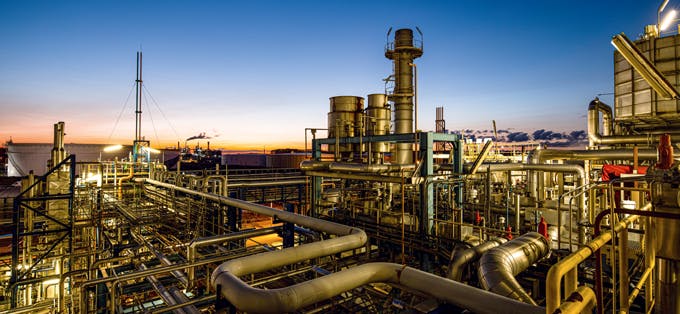Renewable hydrogen
NEW INDUSTRIAL-SIZED ELECTROLYZER IN GERMANY
Through its partnership with Siemens Energy, Air Liquide will build an electrolyzer to produce renewable hydrogen in Oberhausen, Germany. With a capacity of 30 megawatts, this production plant will be the first industrial-sized electrolyzer to be connected to the existing Air Liquide pipeline network. It will support the carbon-reduction efforts of key sectors such as steel, chemicals and refining, as well as the mobility players in North Rhine-Westphalia that it will supply. The publicly funded unit is expected to become operational in 2023.
Energy transition
SETTING SAIL TOWARD NEW HYDROGEN SOLUTIONS
Air Liquide will be Energy Observer’s main partner for the next four years. The two teams have been working together since the autonomous hydrogen-powered and zero-emission laboratory vessel was launched in 2017. By strengthening this partnership, Air Liquide enables the Energy Observer teams to pursue their mission of educating and raising awareness of the challenges of the energy transition—and provides a skills-based sponsorship scheme. Employees from the Group will collaborate on hydrogen research and development projects alongside the Energy Observer teams.


Through our collaboration with Energy Observer and by testing hydrogen technologies in extreme environments, we will be able to accelerate the development of hydrogen solutions and their large-scale applications, particularly in the maritime sector.
MATTHIEU GIARD,
MEMBER OF THE AIR LIQUIDE GROUP EXECUTIVE COMMITTEE AND VICE PRESIDENT SUPERVISING HYDROGEN AND INDUSTRIAL MERCHANT ACTIVITIES
Industry decarbonization
PRODUCING LOW-CARBON HYDROGEN WITH TOTALENERGIES
Under a long-term contract, Air Liquide will take over and operate the hydrogen production unit of the TotalEnergies platform in Normandy, France. With a capacity of 255 tons per day, it will be connected to the Air Liquide network, thus enabling the development of the world’s first low-carbon hydrogen network. The two partners also plan to implement a CO2 capture and storage solution. The CO2 emissions generated by the unit’s hydrogen production should be reduced by approximately 650,000 tons per year by 2030.

